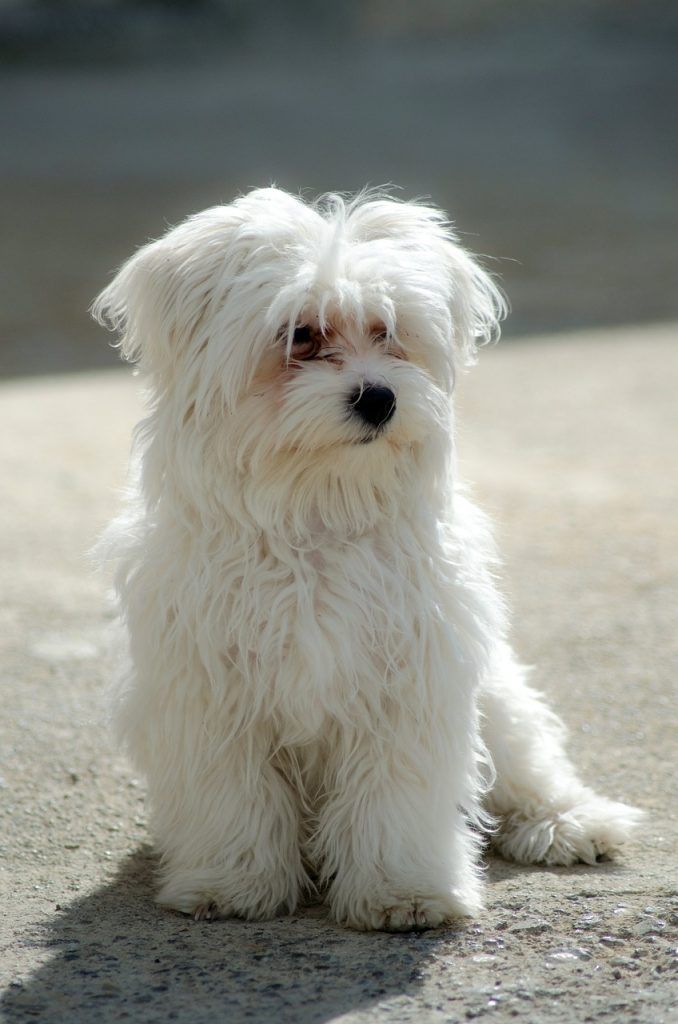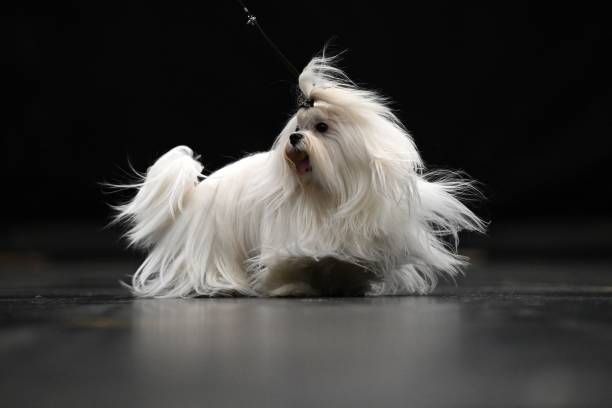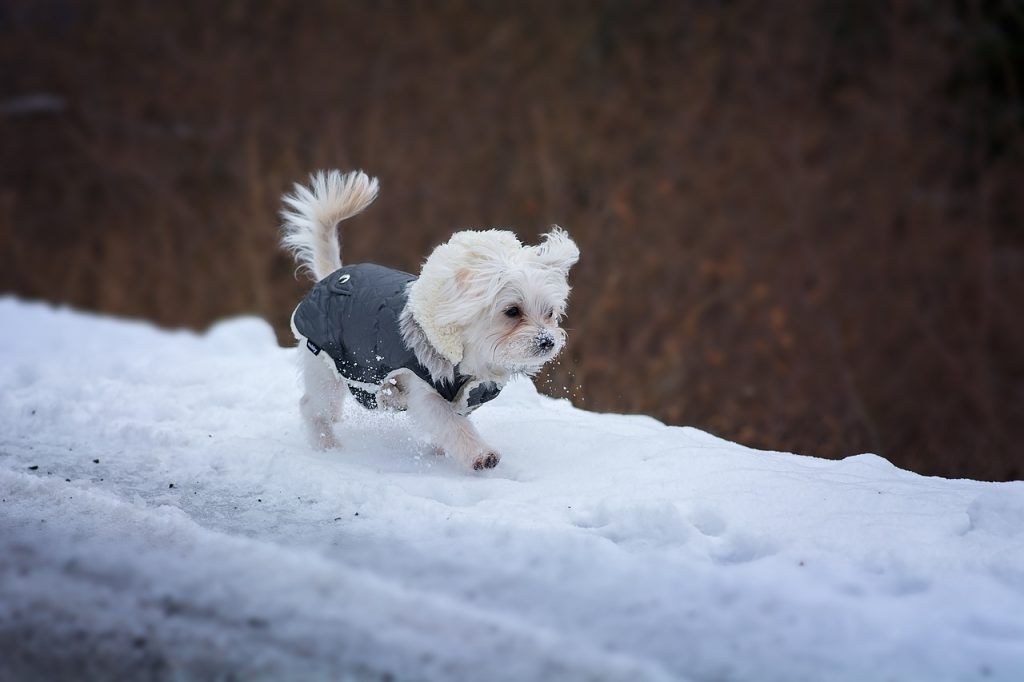Have you ever wondered what kind of dog was favored by ancient Romans, who ruled the world with their power and glory? The answer may surprise you: it was the Maltese, a small, white, and fluffy dog that has been a companion of royalty and nobility for centuries. Known for its silky coat, dark eyes, and irresistible face; the Maltese is also a lively, intelligent, and affectionate dog that loves to be with people.
Breed Overview
| Dog Breed | Maltese |
|---|---|
| Nicknames | Maltese Lion Dog, Maltese Terrier, Ancient Dogge of Malta, Roman Ladies’ Dog, Comforter Dog, Spaniel Gentle, Bichon Maltiase, and Melita Dog. |
| Coat | long, straight, and silky |
| Coat Colors | Pure white |
| Coat Patterns | None |
| Weight | 4 – 6 lbs |
| Height | 10 inches (25 centimeters) for males and 9 inches (23 centimeters) for females at the withers |
| Lifespan | 12 – 14 Years |
| Origin | Island of Malta |
| Breed Ranking | 38 out of 199 (AKC Breed Ranking) |
History of the Maltese Dog Breed
The Maltese is one of the oldest dog breeds in the world. It is believed to have originated on the island of Malta in the Mediterranean Sea, where it was known as the “ancient dogge of Malta” or the “Maltese terrier”. The exact origin of this breed is unknown, but some theories suggest that it may have descended from a type of spitz or spaniel that was brought to Malta by the Phoenicians or other ancient traders. Another theory is that it may have evolved from a miniature version of the Tibetan terrier that was introduced to Malta by the Crusaders or other travelers. What we do know is the Maltese is so deeply ingrained in our history, spanning centuries and civilizations, to such an extent that there is no clear cut path of origin.
The Maltese was highly prized by the ancient Greeks and Romans, who considered it a symbol of love and loyalty. Roman ladies especially adored this breed and carried it around in their sleeves or under their robes. The Roman governor of Malta, Publius, issued a decree protecting the Maltese from theft and harm, stating that anyone who harmed one of these dogs would be punished by death. The Maltese was also associated with the goddess of love, Aphrodite, and was often depicted in mosaics and paintings with her image.

The Maltese was admired by many other cultures and civilizations throughout history. They were depicted in paintings, sculptures, and writings by artists such as Joshua Reynolds, Goya, and Shakespeare. The Maltese was also exported to other countries, such as China, France, and England, where it was crossed with other breeds to create variations such as the Maltese lion dog, which had a longer coat and a mane-like collar.
The Maltese was also given as a gift to royalty and nobility, such as Queen Elizabeth I, Queen Victoria, and Marie Antoinette. Supposedly, Napoleon’s first act after conquering Malta, was to pick out the best Maltese dog as a gift for his wife Josephine.
In significantly more modern times, the Maltese was recognized by the American Kennel Club (AKC) in 1888 and is classified as a toy breed. Continuing with its longstanding tradition of winning human affection, the Maltese is still one of the most popular and beloved breeds in the world. It has retained much of its original appearance and temperament over the centuries and is still a loyal, loving, and lively companion.
Read More: An In-Depth Look at the History of the Maltese Breed
Physical Appearance of the Maltese
The Maltese is a small and elegant dog that has a graceful and refined appearance. They have a compact and square body that is slightly longer than it is tall. Their head is round with a short muzzle and a black nose. Their dark eyes are round and expressive with drop ears that are covered with long hair. The plumed tail arched up over its back completes the look of this incredibly unique breed.
The most distinctive feature of the Maltese is its coat, which is long, silky, and white. So long in fact that it covers the entire body and reaches the ground. They do not have an undercoat and don’t shed much. They can have slight lemon or tan markings on the ears, but these are undesirable traits according to the breed standard.
Size wise these are very small dogs, standing 8 to 10 inches at the shoulder and weighing only 4 to 7 pounds. Maltese dogs have a lifespan of 12 to 15 years.
Personality of the Maltese
The Maltese is a sweet, friendly, and playful dog that thrives on human attention. This is a very loyal breed that is devoted to its family members and will follow them around everywhere. They are very smart and easy to train, so long as you use positive reinforcement and avoid harsh methods. The Maltese can learn a variety of tricks and commands, such as sit, stay, come, roll over, shake hands, and even dance.
The Maltese makes for a good watchdog, alerting you to any strangers or noises. However, this breed is not aggressive, intimidating, or yappy and will usually greet visitors with wagging tails and kisses. They get along easily with other dogs and pets, as long as they are introduced properly and socialized from an early age. Children and Maltese dogs make a great pair, but they are not recommended for very young or rough kids without supervision; the dog can be accidentally injured quickly due to their small size.
If their history has proven nothing, they are a highly adaptable breed that can live in any type of home, whether it is an apartment or a house with a yard. They do not tolerate extreme temperatures well, though, and should be kept indoors most of the time. Regular exercise will keep them fit and happy. A daily walk or a game of fetch or tug-of-war will suffice for this breed. Many Maltese dogs enjoy participating in dog sports such as agility, obedience, rally, and flyball as well.

Myths and Stories About the Maltese
As you now know, the Maltese is a breed with a rich and ancient history, but it is also full of myths and stories. Here are some of the most interesting ones that you may not know:
- The Maltese was believed to have healing powers in ancient times. The Greeks and Romans would place the dogs on their pillows or laps to cure their ailments or relieve their pain. They also thought that the Maltese could prevent baldness by licking their heads.
- The Maltese was associated with the goddess of love, Aphrodite, in Greek mythology. The goddess was often depicted with a Maltese by her side or in her arms. The Maltese was also a symbol of fidelity and loyalty, as it was said to mourn its owner’s death until it died itself.
- The Maltese was involved in many historical events and legends. One story tells that a Maltese named Issa belonged to Publius, the Roman governor of Malta, who welcomed St. Paul when he was shipwrecked on the island. Another story claims that a Maltese named Turi saved the life of King Henry VIII by barking at an assassin who tried to stab him.
- The Maltese has inspired many artists and writers over the centuries. The breed can be seen in paintings, sculptures, and writings by Joshua Reynolds, Goya, Shakespeare, Voltaire, and Byron. The Maltese was also featured in movies such as “The Wizard of Oz”, “The Women”, and “High Society”.
The Maltese is a breed that has a lot of history and personality behind its cute and fluffy appearance. It is a breed that has been loved and admired by many people for many reasons. It is a breed that has many myths and stories to tell.

Common Health Issues Affecting Maltese Dogs
Although they are generally considered a healthy breed that can live up to 15 years or more; like any other breed, the Maltese can be prone to certain health issues that you should be aware of. Some of these include:
- Patellar luxation: This is a condition where the kneecap slips out of place and causes pain and lameness. It can be treated with surgery or medication.
- Dental disease: This is a common problem in small breeds that have crowded teeth. It can cause bad breath, tooth loss, infection, and organ damage. It can be prevented by brushing your dog’s teeth regularly and providing dental chews or toys.
- Reverse sneezing: This is a harmless but alarming condition where your dog makes snorting noises due to irritation in the throat or nasal passages. It can be triggered by allergies, excitement, dust, or smoke. It can be stopped by gently massaging your dog’s throat or covering its nostrils.
- Progressive retinal atrophy (PRA): This is a degenerative eye disease that causes blindness in old age. There is no cure for this condition but it can be detected by DNA testing.
- White shaker syndrome: This is a rare neurological disorder that causes tremors in young white dogs. It can be treated with steroids or anticonvulsants.
To ensure your Maltese’s health, take it to the vet for regular check-ups and vaccinations. Feed your Maltese a high-quality diet that meets its nutritional needs. Avoid giving your dog human foods that may be toxic or harmful to them, especially chocolate, grapes, onions, garlic, or xylitol.
Caring for a Maltese
The Maltese requires moderate grooming to keep its coat clean and healthy. Brush your Maltese’s coat daily to prevent mats and tangles. You may choose to keep your their coat long or short depending on your preference and lifestyle. If you keep it long, you will most likely need to tie it up in a topknot or use clips or bands to keep it out of its eyes. If you keep it short, it will need a professional groomer every 4 to 6 weeks for trimming.
It is possible to train your Maltese to use a litter box or pads if you live in an apartment or otherwise have limited access to outdoor areas. Socializing your Maltese from an early age by exposing it to different people, animals, places, sounds, and situations will help him or her become a confident and well-adjusted pup.

Where to Buy a Maltese
Since the Maltese is a popular and widely available breed that can be found in many countries and regions the average price of a Maltese puppy ranges pretty heavily. Starting around $500 on up to $3000 for a puppy; depending on factors like quality, pedigree, and location of the breeder. The Maltese is not a rare breed, but it is not very common either. The Maltese ranks 37th out of 197 breeds in terms of popularity according to the AKC.
If you are interested in buying a Maltese puppy, try to visit the breeder’s premises if possible and meet the parents and littermates of your potential puppy. Avoid buying a Maltese puppy from pet stores, online ads, or backyard breeders who may not care about the health and welfare of their dogs.
You can find a list of responsible breeders near you by visiting the American Maltese Association website or contacting your local breed club or rescue group. You can also adopt a Maltese from a shelter or rescue organization that may have some Maltese or Maltese mixes in need of a loving home.

Conclusion
Sharing your life with a Maltese is like immersing yourself in ancient doggy history; with their immensely rich history dating back to ancient times when it was revered by royalty and nobility. They have sweet personalities which makes them an ideal companion for anyone who loves dogs or to convert a cat lover. Their typical health issues may require attention but are usually minor and nothing that cannot be managed with proper care. Their different grooming styles allow you to embrace your own personality when you show off your prized Maltese at the local dog park.
More Dog Breeds
If you’re interested in learning more about similar dog breeds, check out:
Or, browse our entire dog breed collection!
FAQ
Do Maltese shed?
Maltese have a single coat of long, silky hair that does not shed much under normal circumstances. However, they still need regular brushing and grooming to prevent mats and tangles.
Are Maltese hypoallergenic?
Maltese are not truly hypoallergenic; no dog breed is. They do produce less dander and allergens than some other breeds, but can still trigger allergic reactions in some people. If you have allergies, consult your doctor before getting a Maltese.
How long do Maltese live?
Maltese have a lifespan of 12 to 15 years on average. They are generally healthy dogs, but they can be prone to some health issues such as dental problems, eye infections, and luxating patella.
How much are Maltese puppies?
Price will vary depending on the quality, pedigree, and location of the breeder. The average cost of a Maltese puppy is roughly $2580, but they can range from $500 to $3000 or even higher.
Do Maltese bark a lot?
Maltese are alert and vocal dogs who like to express themselves. They can bark a lot when they are excited, bored, lonely, or scared. They can also bark to warn their owners of strangers or dangers. You can train your Maltese to bark less by rewarding them for being quiet and ignoring them when they bark excessively. You can also provide them with enough exercise, stimulation, and attention to keep them happy and calm.
- Breed Nicknames: The Maltese is also known as the Maltese Lion Dog, the Maltese Terrier, the Ancient Dogge of Malta, the Roman Ladies’ Dog, the Comforter Dog, the Spaniel Gentle, the Bichon Maltiase, and the Melita Dog.
- Coat: The Maltese has a long, straight, silky coat that hangs close to the ground and covers the entire body except for the muzzle. The coat does not have an undercoat and sheds very little.
- Coat Colors: The Maltese coat color is pure white. Some may have slight lemon or tan markings on the ears.
- Coat Patterns: The Maltese does not have any coat patterns.
- Weight: The Maltese weighs from four to six pounds (two to three kilograms).
- Height: The Maltese stands at 10 inches (25 centimeters) for males and 9 inches (23 centimeters) for females at the withers.
- Lifespan: The Maltese has a lifespan of 12 to 14 years.
- Origin: The Maltese originated from Italy and is generally associated with the island of Malta in the Mediterranean region. It is one of the oldest toy breeds and has been a companion dog for centuries.
- Breed Ranking: The Maltese is ranked as the 37th most popular dog breed in the United States by the American Kennel Club (AKC) as of 2020.
























